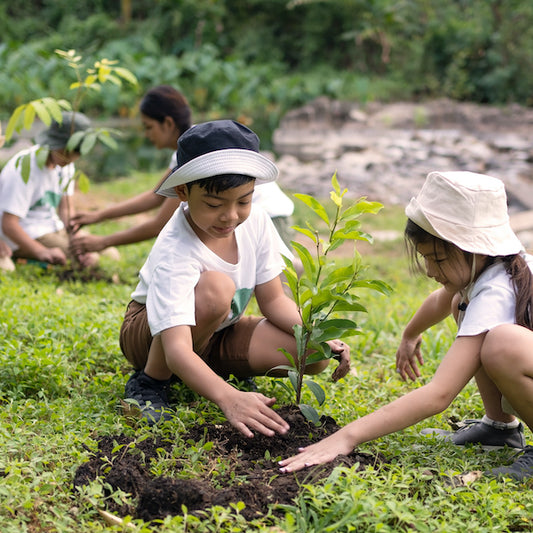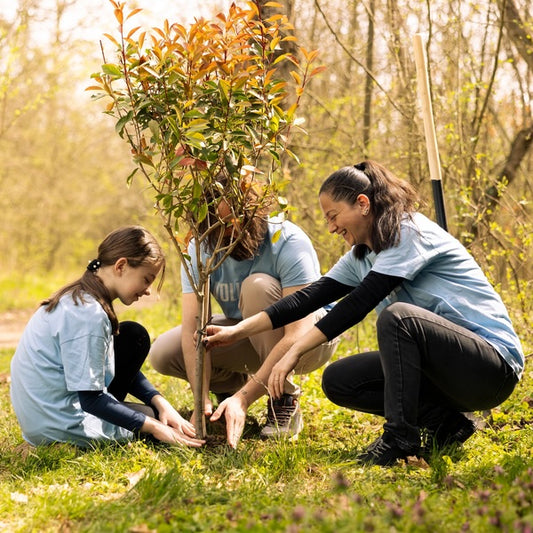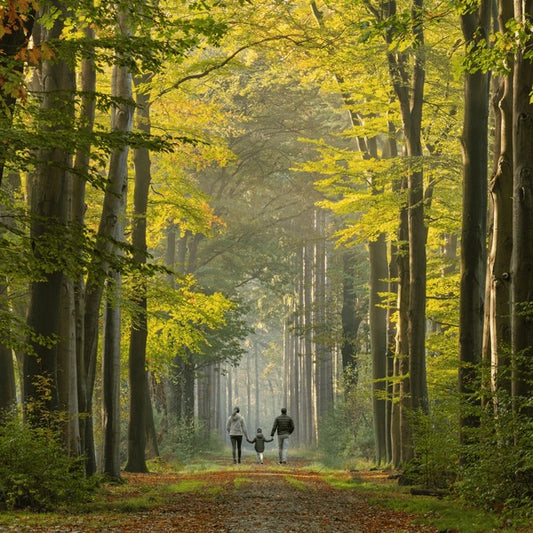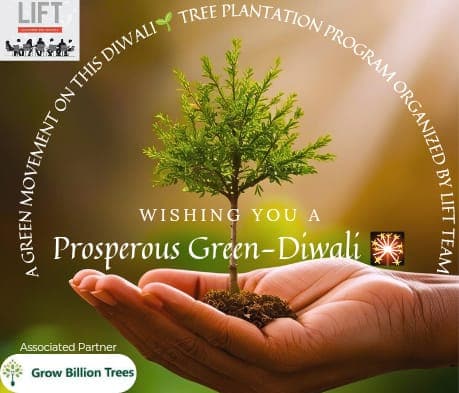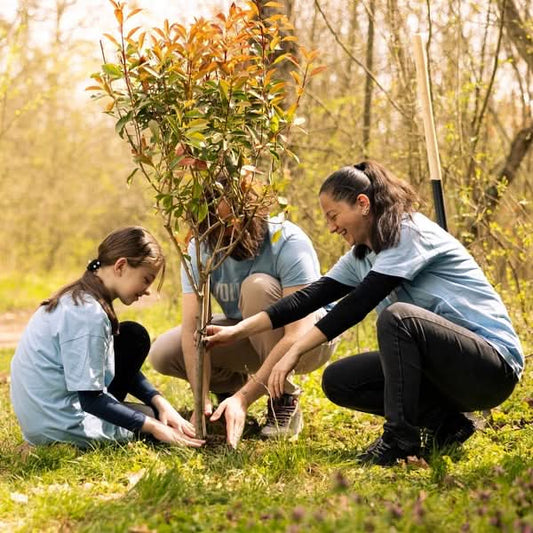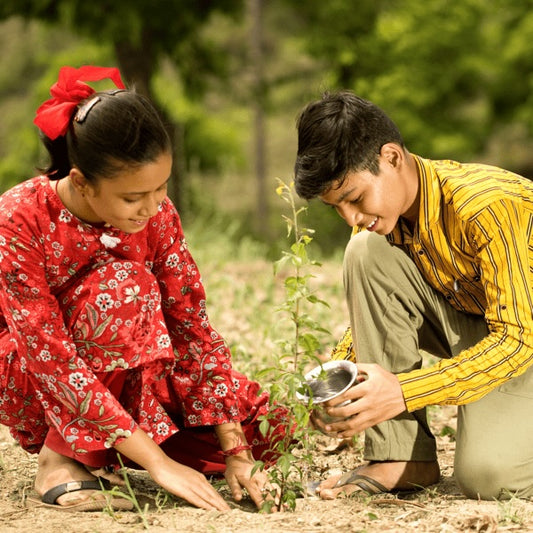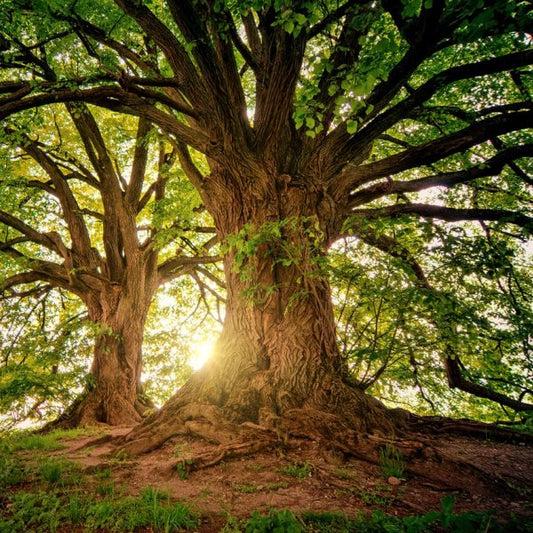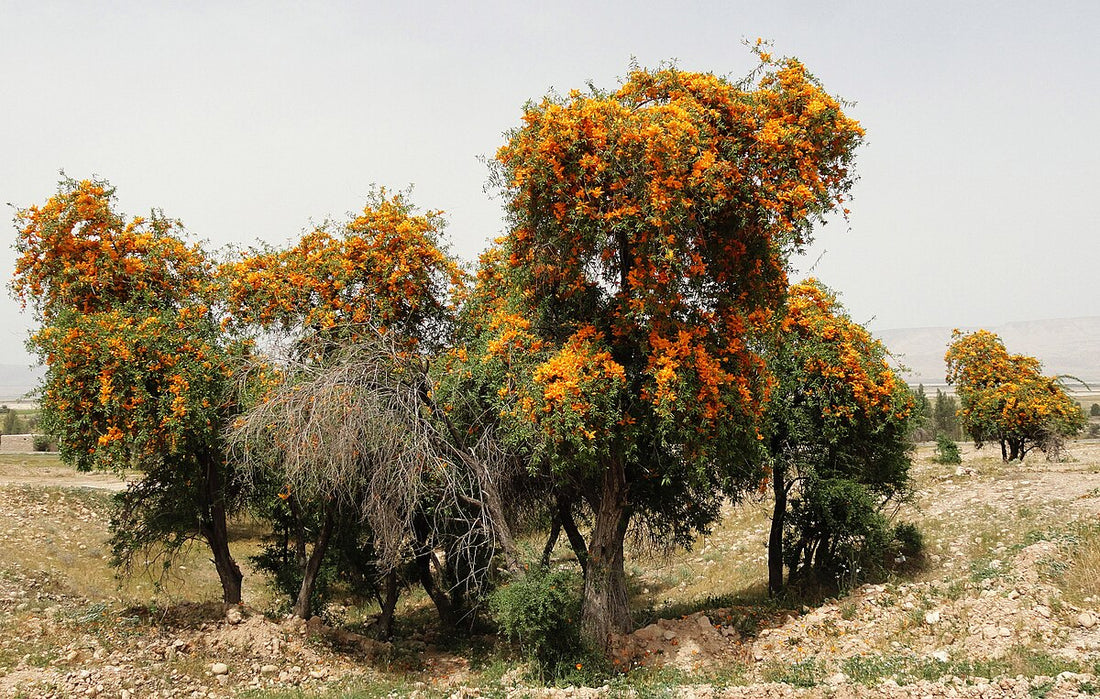

In the vast, arid stretches of India’s Thar Desert stands a tree that defies the odds, blooms with fiery brilliance, and provides life where little else survives — the mighty Desert Teak, locally known as Rohida. Scientifically named Tecomella undula Read more
Trending
Trees for Corporates
Desert Teak / Rohida: Rajasthan’s Golden Tree of Survival, Strength &
In the vast, arid stretches of India’s Thar Desert stands a tree that defies the odds, blooms with fiery brilliance, and provides life where little else survives — the mighty Desert Teak, locally known as Rohida. Scientifically named Tecomella undulata, this tree isn’t just nature’s artwork but a lifeline for desert communities, ecosystems, and biodiversity.
Dubbed the “Lifeline of the Desert,” Rohida is the teak of the dunes — prized for its dense wood, vibrant flowers, and climate resilience. As climate change accelerates and droughts worsen, Rohida’s story of endurance, economy, and ecology is more relevant than ever.
This blog dives deep into the world of Desert Teak — exploring its scientific profile, cultural legacy, environmental role, economic value, and even some lesser-known fun facts.
🌿 Scientific Classification & Botanical Overview
-
Scientific Name: Tecomella undulata
-
Family: Bignoniaceae
-
Common Names:
-
Rohida (Hindi, Rajasthani)
-
Marwar Teak
-
Desert Teak
-
Safed Khejri (incorrectly used in some regions)
-
-
Native to: India (Rajasthan, Gujarat), Pakistan (Sindh region)
-
Tree Type: Deciduous, small to medium tree
-
Height: 4 to 10 meters
-
Climate Suitability: Hot, arid, semi-arid zones
🌺 Identifying Rohida in the Wild
Rohida is visually striking, especially during its flowering season, when it bursts into flame-colored blossoms amid dry landscapes.
-
Leaves: Opposite, lance-shaped, thick with wavy (undulating) margins — a feature that gives the tree its Latin name “undulata.”
-
Flowers: Bell-shaped, orange to yellow, blooming between March to May.
-
Fruit: Flat, long, and split open to release papery-winged seeds.
-
Bark: Pale brown to grey, fissured, and used in traditional medicine.
🧬 Phytochemistry & Medicinal Potential
Rohida isn’t just a survivor; it’s a pharmacy on a trunk.
Key Constituents:
-
Flavonoids
-
Phenolic compounds
-
Tannins
-
Tecomine alkaloids
These bioactive compounds exhibit antioxidant, anti-inflammatory, and antimicrobial properties, making the plant valuable in folk and Ayurvedic medicine.
Medicinal Uses:
-
Decoction of bark is used for treating fever, cough, asthma, and joint pain.
-
Paste from bark applied to wounds and skin infections.
-
Root extracts used as a natural diuretic.
🏺 Historical & Cultural Importance
Rohida is deeply embedded in the cultural and economic fabric of Rajasthan, especially in the Marwar and Shekhawati regions.
-
Historically known as the “Royal Timber of Rajasthan”.
-
Used in crafting intricate furniture, door panels, carts, and even temples.
-
Mentioned in ancient Jain and Rajasthani texts as a sacred and noble tree.
-
Wood gifted during weddings and religious functions as a symbol of strength and prosperity.
In some communities, a Rohida tree planted near homes is considered auspicious, offering both protection and prosperity.
🌍 Ecological Impact & Environmental Role
Desert Teak is a keystone species of the desert ecosystem — its value extends beyond its wood or medicinal use.
1. Drought Resistance
With deep roots and waxy leaves, it survives where even cacti struggle. It provides green cover in otherwise barren land.
2. Soil Enrichment
Its leaf litter improves soil organic matter, helping in soil conservation and fertility in desert agriculture.
3. Windbreaks & Sand Dune Stabilization
Planted along fields or borders, Rohida reduces wind speed and sand movement, helping nearby crops thrive.
4. Pollinator Haven
Its vibrant flowers attract bees, butterflies, and birds, contributing to pollination and biodiversity conservation.
💸 Economic Importance
Desert Teak is a cash tree for rural communities — combining aesthetic appeal, functional strength, and market value.
-
Timber Market: Used in luxury furniture, hand-carved wooden artifacts, doors, and cabinets.
-
Agriculture: Grown on farm bunds in agroforestry models to earn side income.
-
Handicrafts: Jodhpur and Bikaner artisans use Rohida wood in producing exquisite home décor.
The Rajasthan Forest Department has initiated Desert Tree Plantation Programs, encouraging farmers to cultivate Rohida under sustainable forestry schemes.
🤩 Fun Facts About Desert Teak
-
It’s the state tree of Rajasthan, officially recognized for its ecological and economic significance.
-
Known locally as “Marwar Teak”, its wood fetches high market prices despite growing in harsh conditions.
-
Desert festivals in Rajasthan often use Rohida flowers in garlands and rituals.
-
Its flower color shifts slightly based on temperature and soil minerals — a desert chameleon!
-
Traditional carpenters say, “If wood could sing, Rohida would hum desert folk tunes.”
📈 Conservation Status & Threats
Despite its toughness, Rohida faces modern challenges:
-
Overharvesting for timber and crafts
-
Grazing pressure on young saplings
-
Climate change impacts such as prolonged droughts
-
Urbanization and land-use changes
Conservation efforts include:
-
Seed banks and nurseries
-
Awareness programs for farmers
-
Community forest ownership models
🌱 How to Grow Rohida
For those looking to contribute to desert greening, Rohida is your best bet.
Ideal Conditions:
-
Soil: Sandy, rocky, well-drained
-
Climate: Hot, dry, low rainfall
-
Watering: Minimal once established
-
Sunlight: Full sun
Propagation:
-
By seeds (winged seeds germinate easily)
-
Sowing in pre-monsoon for optimal growth
-
Saplings grow 1–2 feet/year in initial stages
Low maintenance and long life make it ideal for afforestation, desert landscaping, and eco-tourism parks.
🎨 Rohida in Folk Art & Handicrafts
Desert Teak has carved its niche in Rajasthani art:
-
Used in making puppet heads, carved panels, musical instruments, and wooden idols.
-
Jodhpur’s traditional “Jharokha” window frames are often made from Rohida wood.
-
Bright Rohida flower motifs are also seen in Rajasthani textile embroidery.
The tree doesn’t just grow in deserts—it flourishes in stories, songs, and sand art.
🧪 Research & Future Potential
Modern science is finally catching up with traditional knowledge. Research into Tecomella undulata’s medicinal chemistry is underway:
-
Investigated for anticancer and anti-inflammatory properties
-
Studied for biofuel potential due to fast biomass growth
-
Explored for climate-resilient agroforestry models
Several universities and forest research institutes are now promoting Rohida-based afforestation in degraded and semi-arid lands.
🔚 Conclusion
The Desert Teak / Rohida tree isn’t just another plant in the wilderness — it’s a symbol of survival, strength, and sustainability. Rooted deep in the sands of Rajasthan, it offers shelter, medicine, wood, and wisdom passed down through generations.
As the climate gets tougher and forests disappear faster, Rohida’s drought-defying resilience and economic value make it a green warrior of the future. Whether you’re an environmentalist, a farmer, or a craft lover, this golden tree has something to offer.
Let’s rediscover, replant, and respect this fiery-flowered miracle of the desert — because even in the harshest lands, life finds a way, and often, it blooms orange.
Desert Teak wood uses
Strong, termite-resistant, and golden-hued, Desert Teak is the carpenter’s desert dream. From royal doors to rustic furniture, it brings both beauty and brawn.
Tecomella undulata medicinal properties
Packed with flavonoids and alkaloids, this tree fights fevers, asthma, and inflammation. It’s the desert’s own green pharmacy in bark and leaf.
Rohida tree in Rajasthan
Known as the “Lifeline of the Desert,” Rohida is Rajasthan’s pride. It’s used in rituals, crafts, and even gifted at weddings.
Drought resistant trees India
Rohida stands tall where most trees fail. With deep roots and low water needs, it’s a champion of arid zone survival.
Rohida tree plantation
Easy to grow and low on maintenance, Rohida plantations thrive in sandy soils. Great for farmers, foresters, and climate warriors alike.
State tree of Rajasthan
Declared the state tree for a reason, Rohida represents strength, culture, and sustainability in the harshest terrains.
Marwar teak vs Indian teak
Rohida, aka Marwar Teak, is drier but just as durable. It’s the desert cousin of Indian teak—tougher and more climate-smart.
Rohida tree flower
These fiery orange-yellow blossoms aren’t just pretty—they feed pollinators and color Rajasthan’s summers with a burst of joy.
Tecomella undulata in Ayurveda
Used for treating cough, fever, and joint pain, it’s a lesser-known but powerful herbal warrior. Ayurveda loves this desert healer.
Rohida for sand dune stabilization
Rohida roots lock sand and stop desert winds in their tracks. It’s a natural wall against shifting dunes.
Desert teak timber price
Desert Teak fetches high market value due to its strength and limited availability. Small tree, big returns.
Ecofriendly trees for arid zones
Rohida leads the eco squad in deserts—low water, high value, and zero fuss. A true green investment for dry lands.
FAQ
What is the Desert Teak or Rohida tree?
It’s Tecomella undulata, the desert’s golden warrior. Native to Rajasthan, it’s known for its durable timber, vibrant flowers, and superpower-level drought resistance. Basically, it’s what trees aspire to be when faced with sand, sun, and survival mode.
Why is Rohida called the lifeline of the desert?
Because it holds down sand dunes, offers shade in scorching heat, feeds pollinators, and powers local economies. When all else dries up, Rohida keeps standing tall—like a real desert superhero in root form.
Is Desert Teak different from regular teak?
Absolutely! Desert Teak (Rohida) thrives in arid zones and produces lighter, golden wood. While Indian teak needs rain, Rohida laughs at droughts. Think of it as teak’s resilient cousin with desert vibes and serious carpentry appeal.
What are the uses of Desert Teak wood?
From high-end furniture and traditional crafts to doors, temples, and musical instruments—Rohida wood does it all. It’s termite-resistant, easy to work with, and has a rich grain that makes artisans drool.
Can the Rohida tree survive extreme drought?
Yes, and how! With its deep roots and tough-as-nails leaves, Rohida shrugs off long dry spells. It's the botanical version of a camel—low maintenance, high endurance, always ready for the desert marathon.
Where is the Rohida tree mainly found?
Rohida calls Rajasthan’s Thar Desert home, especially in Marwar, Bikaner, and Jodhpur. You’ll also spot it in parts of Gujarat and Pakistan’s Sindh region, holding the fort against erosion and extinction.
Is Rohida used in traditional medicine?
Indeed. The bark and roots are brewed in folk medicine for fever, joint pain, and even urinary troubles. It's like a desert-born doctor—bitter, barky, and remarkably effective in old-school healing.
What makes Rohida eco-friendly?
It grows in poor soils, stabilizes sand, supports biodiversity, and needs no irrigation. Low on demands, high on benefits—it’s the poster child for sustainable desert greening.
Why is Rohida the state tree of Rajasthan?
Because it symbolizes strength, sustainability, and cultural pride. Its wood builds homes, its flowers brighten festivals, and its roots hold the desert together. If Rajasthan had a heartbeat, Rohida would be it.
Can I grow Desert Teak on my farm?
Absolutely! If your land’s dry and your water’s scarce, Rohida’s the perfect pick. It grows easily, demands little, and even earns well from timber or agroforestry models. Win-win in every way.
How valuable is Desert Teak in the timber market?
Highly! Due to its durability and rarity, Desert Teak fetches a premium. Crafters and builders love it, and so do investors. One tree, many returns—Rohida is gold in woody disguise.
What are the benefits of Rohida flowers?
They’re pollinator magnets, adding bursts of orange-yellow to barren landscapes. Besides attracting bees and birds, they bring life to the desert and color to local traditions. Functional and fabulous.
Most Popular
Connect with us
-
👥 Corporates
If you are looking for:
- 🌲 Tree Plantation Events
- 📊 CSR Projects
📧 corporate@growbilliontrees.com
📞 +91 9699723523
💬 +91 9370599291 WhatsApp (Only)
🕒 Mon - Sat | 10am - 7pm IST
-
🧩 Tree Plantation NGOs
If you are looking for:
- 💰 Financial Assistance
- 🤝 Operational Support
📧 support@growbilliontrees.com
📞 +91 9699723523
💬 +91 9370599291 WhatsApp (Only)
🕒 Mon - Sat | 10am - 7pm IST
-
🌼 Individuals
If you are looking for:
- 👥 Group Tree Plantation Drive
- 🌳 Bulk Tree Plantation
📞 +91 9699723523
💬 +91 9370599291 WhatsApp (Only)
🕒 Mon - Sat | 10am - 7pm IST
- Choosing a selection results in a full page refresh.
- Opens in a new window.

